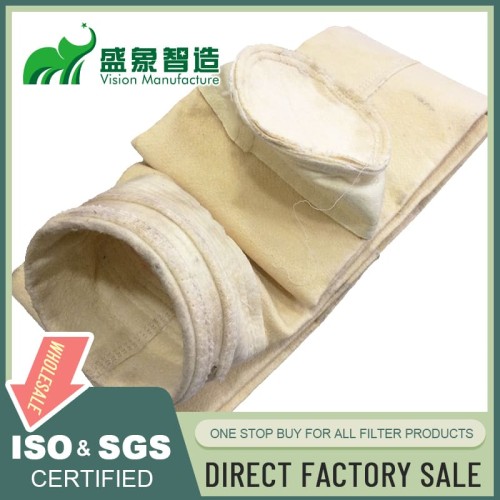
Technicians about pulse jet bag filter
Pulse Jet Ash Cleaning Device - Part 1
The pulse jet ash cleaning device utilizes compressed air as the cleaning gas source and consists of a pulse valve, air bag, and blowing pipes. Each row of filter bags has corresponding blowing pipes, with ten blowing holes aligned with the lower filter bag. The blowing pipes are connected to the air filter bag, where a submerged pulse valve (equipped with a solenoid valve) is installed. The solenoid valve's action triggers the diaphragm of the pulse valve, resulting in a short burst of compressed air being sprayed instantly into the filter bag through the injection pipe. This causes the filter bag to expand outward. Once the bag reaches a certain position, its tension increases, subjecting it to strong shock and vibration, resulting in reverse acceleration and subsequent retraction.
Meanwhile, the dust layer on the filter bag's surface, unaffected by tension, falls off due to inertial forces, effectively cleaning the filter bag. The electromagnetic pulse valve serves as the electrical actuator in the pulse jet ash cleaning device, enabling control over the pulse cleaning process. The system employs a programmable logic controller (PLC) as the core controller and is equipped with pressure/differential pressure transmitters, platinum thermal resistance, and other detection instruments for signal collection.
On-site debugging and operation are facilitated through an in-situ operation box, while a host computer monitoring system allows for operation monitoring. The overall system is highly functional and stable.
Selection of Filter Speed and Filter Material - Part 2
One of the most critical factors in the design of a dust collector is the selection of the filtration speed, which depends on the dust properties, viscosity, humidity, and other factors specific to the application. The filter speed selection for a pulse bag filter follows a specific mode. For dust with high humidity and fine particle size, a low value such as 0.8m/min can be chosen as the filtration speed. For dust with low humidity and larger particle size, a range of 0.8-1.2m/min is suitable.
Here are three key technical aspects that technicians should be aware of regarding pulse jet bag filters:
- Pulse Cleaning Sequence and Timing:
Technicians need to understand the pulse cleaning sequence and timing in a pulse jet bag filter system. This includes knowledge of how often pulses are initiated, the duration of each pulse, and the intervals between pulses. Proper sequencing and timing are essential to ensure effective cleaning of the filter bags without causing excessive wear or pressure differentials.
- Differential Pressure Monitoring:
Technicians should be well-versed in monitoring and interpreting differential pressure across the filter bags. Differential pressure indicates the level of dust accumulation and the need for cleaning. Technicians need to know the acceptable differential pressure range and when to initiate pulse cleaning based on this measurement to maintain optimal filter performance.
- Bag Inspection and Replacement:
Regular inspection and replacement of filter bags are critical for the pulse jet bag filter's efficiency. Technicians should know how to assess bag conditions, identify signs of wear, tears, or holes, and determine when replacement is necessary. They should also be skilled in safely removing and installing new bags, ensuring minimal downtime and maintaining consistent filtration.
By understanding these technical aspects, technicians can effectively operate, maintain, and troubleshoot pulse jet bag filter systems to ensure efficient dust collection and extended equipment lifespan.

